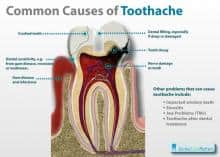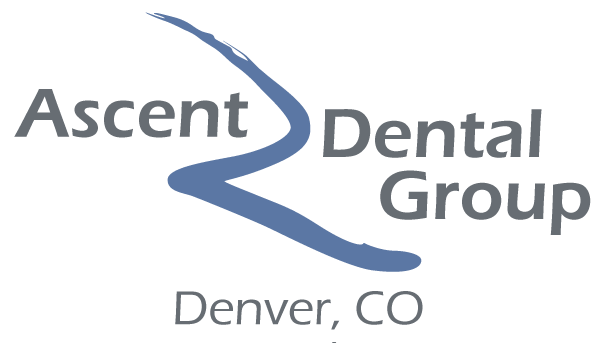Things to Know about Tooth Whitening
If you are considering tooth whitening, here are some things to keep in mind so you can make the right decision about your tooth whitening solution. Tooth Whitening Compounds Are Safe for the Teeth, but Not for the Gums Most tooth whitening approaches use a form of peroxide, which attacks the organic molecules that cause staining. It can also attack organic molecules in your gums, leading to irritation and receding gums. If you are using an at-home whitening solution, don’t get it on your gums. When a dentist performs tooth whitening or provides you with whitening trays, they are designed to protect your gums. Professional Tooth Whitening Compounds Are Much Stronger Than Over-the-Counter (OTC) Options Tooth whitening gels used in a dental office may be five times stronger or more than the over-the-counter whiteners you find at the drug store. OTC Whiteners May Rely on Abrasives or Acid to Whiten Teeth Because they are not allowed to be as strong, OTC whiteners try to get more whitening by using abrasives to scrape away stains (as well as enamel) or acid (that can also damage enamel) to remove organic compounds that cause stains. Over the long-term, these may make your teeth yellow as they thin the enamel and let the dentin underneath show through. Sensitivity Causes and Prevention Teeth sensitivity after tooth whitening is often caused by the removal of organic molecules that may block the tiny tubules that run from your tooth pulp to the tooth surface. When these are opened, your teeth are exposed to more temperature fluctuations. Many new professional whiteners contain compounds that reduce sensitivity. If you would like to learn more about tooth whitening options, please contact Ascent Dental in the Cherry Creek area of Denver for an appointment.
Why Oral Hygiene Is Important
Oral hygiene is one of the most important things you can do for your health on a daily basis. It can have an impact not only on your oral health, but on your entire body. Oral Hygiene Can Prevent Periodontal Disease Periodontal disease is when your gums become infected. Bacteria start out clinging to the surface of your teeth, but if they can develop enough of a protective biofilm, what we describe as “plaque,” they can begin to grow colonies below your gum line. The plaque at the gum line can harden, making it impossible to remove with normal brushing and flossing, and this hardened plaque then becomes a protective shelter for bacteria to grow and develop more. Periodontal disease is accompanied by red, swollen, and bleeding gums. As bacteria grow into your gums, they attack the bone and ligaments that hold your teeth in place. You will notice your teeth starting to loosen. At this point, you are beyond the help of normal hygiene and you need to see a dentist. Periodontal disease is the leading cause of tooth loss in the US, but it also threatens your entire body. Effects of Gum Disease on Your Body Gum disease has been linked to many dangerous health conditions. Bacteria enter your bloodstream and spread throughout your body. There are studies linking periodontal disease with preterm delivery and low birth weight. Research suggests that periodontal disease can contribute to kidney failure, and that kidney problems also make periodontal disease worse. Periodontal disease has also been linked to heart disease and stroke. Weaker evidence even suggests a connection between gum disease and impaired lung function. Oral Hygiene Protects Your Teeth Oral hygiene can also help protect your teeth from cavities and their potentially deadly consequences. When a cavity progresses inside your tooth, resulting in an infected tooth nerve, what is called an abscessed tooth, the infection can spread to other parts of your body, such as your sinuses and even your brain. Thousands of people visit the emergency room and dozens die every year as a result of such infections. Don’t neglect your oral hygiene. Make sure you brush and floss at home. Make regular appointments with your dentist to ensure you are getting professional cleanings that can help keep your teeth and gums healthy. If you are overdue for a dental appointment, please contact Ascent Dental in the Cherry Creek area of Denver today.
We are finally moved!
5 years ago I started Ascent Dental from scratch with a vision. I selected a great space for that long term vision and began my journey. Fast forward 5 years and here we are, at a brand new facility. Why the move? My 5 year contract expired and renegotions began, unfortunately a deal was not reached. Life goes on. I found another great space and I started over with building a new practice at a new location. (not very far from the old location) This time I got to build it completely from the ground up and exactly how I wanted (the last space was retrofitted). My contractor did an amazing job with helping me get to this point and would like to thank her. (Jo Temmer – Northstar Construction). Be assured we will be here a while (as I signed a 10 year deal. Moving has not been fun (is it ever?), equipment has been minorly damaged and the stresses of construction / moving got between my office manager and I. (she resigned last week) All aside we are back up and running! I look forward to being in this office and treating you. I am assured you will find the new office an improvement and will enjoy it. Thank you for all your patientce. See you soon -Dr. Johnston Here are some pictures of the new space
Choosing the Best Toothbrush
If there’s one piece of personal hygiene equipment you make sure you use at least twice a day, it should be your toothbrush. Brushing your teeth twice a day is crucial to your oral hygiene. You’re going to be using it for the next three months (that’s 180 uses, for those of you that like the numbers), you want to pick one that is comfortable and fits your style. Here are some tips for choosing the best toothbrush for you. Look for the ADA Seal of Acceptance The American Dental Association seal of acceptance is your sign that a toothbrush meets certain quality guidelines. These include: All components are safe for use in the mouth Bristles are not sharp or jagged The handle material is durable Bristles are secure and won’t fall out under normal use Can be used effectively without special training These basic requirements make the difference between a good toothbrush and a bad one. Bristles and Head Soft bristles are considered best for your toothbrush, because they’re less likely to damage gums or tooth enamel. Pick a tooth brush with a small head that allows you to maneuver it into all the places hwere you need your tooth brush to be. In general, a head less than a half inch wide and one inch long is good for this purpose. Pick What You Like Beyond that, you can make decisions about what you like from a toothbrush. Pick a grip that’s comfortable, a neck that makes it easier for you to reach around and get all your teeth, and a color that pleases you and is easily distinguishable from the brushes of other people in your house. These factors don’t make much difference in the effectiveness of your toothbrush. Should You Select Electric? Considering an electric toothbrush? There is some controversy about whether they’re generally more effective, but there’s no doubt that they help some people get better results. An electric toothbrush may be good for you if: You have trouble brushing for long enough (electric toothbrushes often have timers so you brush long enough) Your handedness means you brush better on one side of your mouth than the other You repeatedly have trouble with gum disease or excessive tartar buildup due to poor brushing Your dentist recommends one Your toothbrush is the primary tool that you can use to ensure your optimum dental health. At Ascent Dental in Cherry Creek, we have many other tools to support your efforts. To schedule your next appointment, please contact Ascent Dental today.
How Often Should You Visit the Dentist?
As with all health recommendations, there is no single rule for how often you should have your regular dental checkups and cleanings that works for everyone. For decades, dentists have generally recommended that people should have routine cleanings every six months or so (twice a year), but this is just a general guideline and may not hold for everyone. In fact, there are some people we know need to see the dentist more often than this to keep their teeth and gums healthy. You Should Visit the Dentist More Often If Some health conditions and lifestyle choices can put your teeth and gums at risk. More frequent checkups can help safeguard your oral health and prevent tooth loss. You may want to visit your dentist more often if you: Have diabetes Are a smoker Have a weakened immune system Have gum disease Have cavities every time you go to the dentist We will talk to you about your health and mouth conditions and whether you should make more regular checkups. Should You Visit the Dentist Now? You may be wondering whether it’s time to schedule a visit to your dentist now. You should see the dentist if you are experiencing: Bleeding, red, or sensitive gums Constant toothaches Temperature or pressure sensitivity Loose teeth Localized hot spot or puss-filled spot on your gums Unexplained headaches that have started recently You should also contact your dentist if you have any other concerns about the health of your teeth and gums. We will talk to you about potential health conditions and whether you should come in to see us. Many dental problems will worsen if left untreated, so it’s better to be safe than sorry. To schedule an appointment with Ascent Dental in the Cherry Creek area of Denver, please call (303) 975-6987 or email us today.
Causes of a Toothache

I found this diagram on the internet and it really helps explain causes of tooth sensitivy or pain. Causes of a toothache can be many different things. I wanted to share this. Dr. Johnston
Bonnie and her Steak

Meet Bonnie- Bonnie came to us for a crown that fell out. Upon the exam, it was discovered the she had multiple teeth that needed to be removed. At the consult, she was surprised at the treatment plan of removing her teeth. She was told we could replace the teeth with dental implants. Again, she was surprised at the cost and considered not doing them and just removing the teeth. We removed 4 very importnat teeth (2 on each side) and put her in a partial denture. We bone grafted the extraction sites, which take 4-6 months to be ready for implants. She did not like that partial dentures and elected not to wear them. 4 months went by and we placed the implants. At this appointment she asked me when she was going to get to eat steak. We then had a few more follow up visits on the implants and again she asked me when she was going to be able to eat steak. The time came for the implants to be restored with teeth on them. I again heard about the steak. The day we placed the teeth, I had aranged a steak dinner in our consult room. We placed the teeth and I led her into the consult room to show her, her steak. This was one of the top rewarding moments in my career. To see the smile on her face and her surprise. I had to return to other patients, but was told she didn’t leave a crumb on that plate! Here’s to Bonnie and her Steak!!! – Dr. Johnston
Deep Cleaning / Dental Scaling

When teeth and gums don’t get cleaned properly, the food particles mix with bacteria in your mouth and develop a soft substance called plaque. This plaque if not removed can turn into a harder substance known as dental tartar or calculus. If tartar is still not removed, it start impinging on the gums and create a seperation between the gums and the tooth. Once this seperation occurs, it allows for more food particles and bacteria to work its way down into the gum. The bacteria secrete waste from eating your microscopic food particles that can destroy gums and bone around the tooth. Once this sequence is established, brushing or flossing will not help remove this. A dental deep cleaning or Scaling and root planing procedure is needed. This is where dental professionals such as a dentist or dental hygienist takes their instruments and goes under the gumline to remove this structure of tartar. Once destruction of the bone has occured, the bone cannot grow back. If enough bone gets destroyed around the tooth, the tooth then loses its support and removal of the tooth is indicated. We commonly find that missing rountine cleanings (depending on one’s dental hygiene) over 1-2 yrs will lead to this. Its very important to see a dentist and have your teeth professionally cleaned so this process does not occur. I have attached a diagram that describes this. – Dr. Johnston
